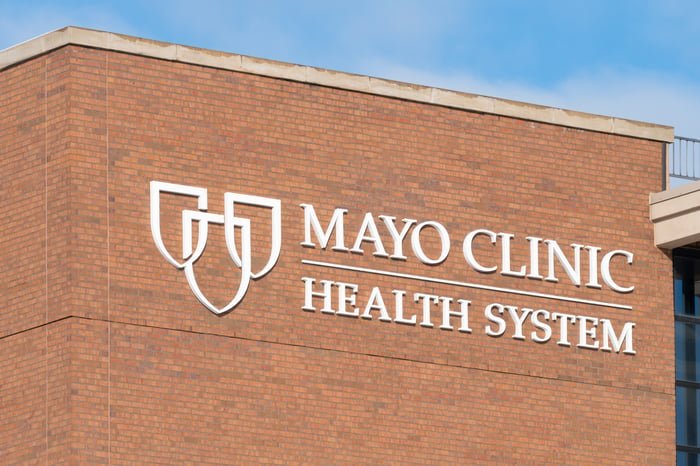Imagine a world where patients find your practice before they even decide to make an appointment. That's the power of content marketing for healthcare professionals. Today's patients are actively engaged online, researching conditions and seeking trusted healthcare providers. By creating informative and engaging content, you can become a valuable resource, build trust, and attract new patients to your practice.
According to one study, two-thirds of all patients consult Dr. Google before a health consultation. By establishing an online presence, you can reach potential patients before they're even ready to step foot in your practice.
Through this blog post, we introduce you to proven strategies and channels that can help you become more visible, gain recognition, build trust, acquire and retain patients, and ultimately be more successful.
The power of Content in Medical MArketing
Medical content marketing is a crucial aspect of healthcare marketing which plays a vital role in a modern medical practice. It enables physicians to build trust and credibility by sharing informative content that helps educate patients in their decision making process.
Sharing valuable insights and experiences through content marketing showcases your expertise and commitment to ongoing learning. This helps you establish yourself as a leader in your field, attracting patients who value knowledge and experience. Content marketing contributes to generating higher online visibility, making it easier for potential patients, including those who are new to your area, to find you. By strategically optimizing your content , you increase your chances of appearing at the top of search results when potential patients seek information related to your expertise. This targeted approach ensures you reach the right audience and stand out from the competition.
Popular Types of Content for Healthcare MArketing
From blog posts informing the reader about health lifestyle practices, to news-format articles about policy developments, and to e-books and social media -there are various formats in which content can be presented to your audience.
What remains of equal importance is formatting your medical content to ensure that it resonates with the right audience. Regardless of your preferred communication channel, there are some key point to consider when creating medical content:
1. Write clearly and concisely: Avoid using jargon and overly technical language. Use short sentences and explain complex concepts in simple terms.
2. Structure your content logically: Use headings, subheadings, and bullet points to break up information and make it easily scannable.
3. Cite credible sources: Clearly and accurately cite your sources, ensuring they come from reputable medical organizations or peer-reviewed journals.
4. Use visuals effectively: Images, infographics, and videos can enhance understanding and engagement, provided they are accurate and relevant to the subject of your text.
5. Tailor your content to your audience: Break down complex topics into clear, easy-to-digest information for patients, meeting them where they are in their healthcare journey.
What you should not do:
2. Don't prioritize sales over education: Focus on providing valuable information and building trust, not pushing specific treatments or medications.
3.Don't ignore compliance regulations: Ensure all content adheres to relevant healthcare regulations and ethical guidelines for marketing. Avoid violating patient privacy or making unsubstantiated claims.
4. Don't forget about readability: Avoid overly technical jargon and complex sentence structures. Tailor your content to the average patient's understanding, using clear and concise language.
For effective healthcare marketing, choose a mix of content formats which complement each other and enable you to speak to your audience through multiple channels. A common mix are blog posts and advertising. This is a classic push and pull marketing tactic which enables you to target your audience organically and by gaining their attention through beautifully crafted ads placed strategically on platforms they frequent.
Medical Blog Posts
Blog articles are a commonly used format for medical marketing. Patient blogs, or case-studies have proved to increase the desire of readers to take preventative health actions.
Furthermore, medical blogs offering lifestyle advice for various conditions or providing mental health support are powerful tools to connect with patients, build trust, and demonstrate your commitment to their well-being.
However, compared to general content marketing, creating medical content comes with unique challenges:
1. Regulations and Laws: Medical content must comply with strict regulations regarding the dissemination of medical information and the advertising of medical products or services. YMYL websites (Your Money or Your Life) are particularly scrutinized by search engines to ensure the information is accurate and trustworthy.
2. Clarity and Simplicity: Complex medical topics need to be presented in a clear, structured, and easy-to-understand language to avoid confusion among readers.
3. Sensitivity and Empathy: Certain medical topics can be sensitive for some readers. Content creators must be mindful of the emotional impact and handle these topics with empathy and compassion.
Info Flyer and Whitepapers
Whether digital or print, informational flyers and whitepapers are popular formats in medical content marketing for several reasons. Whitepapers and informational flyers often delve into a single, complex topic in greater detail, providing thoroughly researched and comprehensive information. Similar to blog articles, they serve the purpose of patient education, encouraging preventive measures, or aiding in comparing treatment options.
Similar to blog posts, medical flyers and white papers also need to comply with regulations and should avoid overly complex medical jargon.
Videos and Webinars
Video formats and webinars have gained popularity in medical marketing in recent years because visual and auditory representation allows for breaking down complex processes and conveying them in an easily understandable manner. Especially procedures and treatments are often more efficiently explained than in textual form. Lastly, live webinars offer the opportunity to interact with your audience, further strengthening your expert status.
Compliance with regulations and laws, primarily concerning the dissemination of medical information and the advertising of medical products or services, should be top priority here as well. On the other hand, it is essential to observe data protection regulations and compliance guidelines. Your case studies should be prepared in such a way that no personal health data of patients are disclosed externally. Especially in live webinars, it is crucial to ensure that medical information is presented correctly and responsibly. False or offensive information could have serious consequences, so it is essential to invest time and resources in meticulous preparation and, if necessary, liability and risk management.
Social Media Content for Medical Professionals
Particularly among young patients, gathering information through social media is very popular. Various platforms like YouTube, Instagram, Facebook, LinkedIn, or Pinterest offer you the opportunity to reach different audiences with different formats. Social media platforms, often with their short-form content formats, are also used to promote other long-form content such as blogs, whitepapers, or webinars and to raise awareness of relevant topics. The barrier to interaction on social media is much lower than on other marketing channels, which is why social platforms are often used as entry points to connect with potential patients.
Audience targeting with medical Content MArketing
Addressing target audiences in medical content marketing requires a nuanced and cautious approach. You should prioritize accuracy, empathy, respect, and compliance to build trust and provide real value to your audience.
Content marketing is a powerful lever for medical practices, but keep in mind that your target audience differs from any other conventional audience. Your audience may be dealing with personal and potentially uncomfortable health issues. Researching these issues can sometimes be frightening. Therefore, consider the emotional state of your potential readers and be mindful not to exploit any vulnerability. Adhere to data protection standards and avoid collecting or sharing data beyond your stated purpose. Keep case examples as vague as necessary and as specific as possible.
Another crucial aspect of medical content marketing is the associated regulations. You must ensure that you comply with healthcare marketing regulations, which often restrict targeting based on specific health conditions or treatment histories.
SEO for Improved Visibility
Content marketing and Search Engine Optimization (SEO) go hand in hand. Through content marketing, doctors can create valuable and informative content such as blog posts, journal articles, videos, and infographics that address common health issues and provide insights into medical procedures and developments.
By integrating SEO techniques such as keyword optimization, local SEO, and website structure optimization, doctors can increase their online visibility and improve their rankings in search engine results pages (SERPs), making it easier for potential patients to find this content when searching for medical information online.
By regularly updating and monitoring the content, they ensure its relevance and effectiveness in attracting and engaging patients, ultimately leading to practice growth.
Success Stories for Medical Content MArketing
Mayo Clinic

One of the world's most renowned medical institutions, the Mayo Clinic in North America and England, uses content marketing across various channels to disseminate medical information and effectively engage with potential patients.
Website: The Mayo Clinic's website serves as a central hub where visitors can find articles, videos, and interactive tools on a wide range of health topics. The website is designed to be user-friendly, making it easy for visitors to access the information they need. By providing valuable content, the Mayo Clinic establishes itself as a trusted source of medical information, which in turn strengthens its reputation and attracts more visitors to the website.
Content Hubs: The Mayo Clinic has dedicated content hubs focusing on specific health conditions such as cancer, diabetes, and mental health. These hubs offer comprehensive information, resources, and support for patients and caregivers dealing with these conditions. By creating specialized hubs, the Mayo Clinic addresses the specific needs of different patient groups and establishes itself as a go-to resource for comprehensive health information.
Social Media: The Mayo Clinic is active on various social media platforms, including Facebook, Twitter, LinkedIn, and YouTube. They share a mix of content, including articles, videos, infographics, and patient stories, to engage with their audience and raise awareness about important health topics. The Mayo Clinic also uses social media to interact with patients, answer questions, and provide support. By maintaining an active presence on social media, the Mayo Clinic can reach a broader audience and communicate in real-time with patients and healthcare professionals.
By employing content marketing, the Mayo Clinic focuses on providing valuable, accurate, and engaging content that meets the needs of its audience. They prioritize building trust and credibility by offering reliable medical information and fostering meaningful interactions with their audience. By utilizing various channels such as their website, content hubs, and social media, the Mayo Clinic effectively reaches patients, caregivers, and healthcare professionals, ultimately fulfilling its mission to inspire hope and contribute to the well-being of people worldwide.
St. Jude Children's Research Hospital

St. Jude Stories: The blog presents stories full of hope and inspiration from children and families fighting cancer. Through these stories, the hospital offers insights into the lives of the affected families while also conveying its mission and values.
Social Media: St. Jude utilizes social media to share research updates, raise awareness about childhood cancer, and engage with affected families. Through regular posts and updates on platforms such as Facebook, Twitter, and Instagram, the hospital can spread its message and build a community dedicated to its work.
Through these various content marketing initiatives, St. Jude Children's Research Hospital can support its mission of fighting childhood cancer and giving hope to affected families. By sharing stories, enabling interactions, and communicating through social media, the hospital strengthens its commitment to the community and contributes to raising awareness about the importance of childhood cancer research.
Tipps For Writing Compelling Medical Content
Use Storytelling
Storytelling in healthcare starts with the question "why?" to make medical topics more accessible through human experiences and relationships. By focusing on the emotions, stories are created that appeal to both professionals and patients and present complex issues in a simple and emotional way. An effective storyline is guided by the SUCCESs formula, which aims to make messages simple, unexpected, concrete, creative and emotional while telling a story.
Integrate visual elements
Incorporating videos, tables, infographics or photos makes it easier to present complex medical concepts to the information seeker.
With interactive elements such as slideshows, quizzes or animations, you can increase user engagement and actively involve them in the learning process.
Ensuring your images have an Alt Text for those visually impaired, and your videos contain captions for those with hearing problems, helps improve your content by making it accessible to all your patients.
Collaborate with Professional Content Creators
Through this article, we've walked you through the various types of content you can leverage for your medical practice, we also provided you with tips and tricks of making that content as relevant to your audience as possible.
Creating content is not an easy task, and creating medical content is ten times more difficult. Our team of content creators, from graphic designers to medical social media experts and writers, understands the unique challenges and responsibilities that come with producing high-quality medical content. We work tirelessly to ensure accuracy, clarity, and empathy in every piece we create, striving to educate and empower our audience while upholding the highest standards of medical integrity and ethics.
Contact us today for a non-binding consultancy and learn how we can help you leverage content marketing to solifify your patient base and gain trust in your medical field.










-1.jpg)

